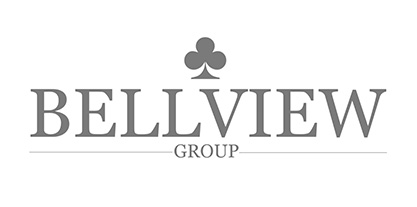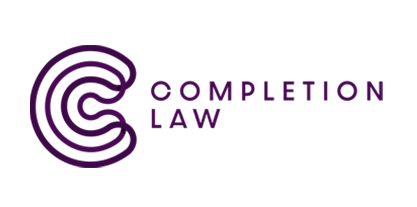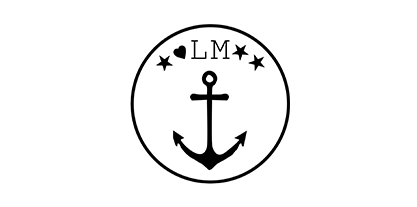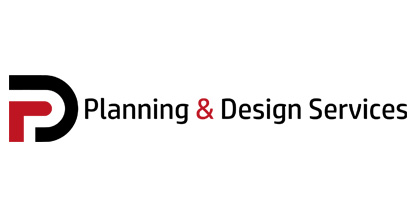
New Businesses…
At Communilife we aim to support new business start ups with our wealth of experience, with the help of external bodies and to provide a step-by-step guide to starting up your business.
Find your business idea
The first of the steps to start any business is figuring out what you want your business to be. Without this you have nothing and should stop here. Wanting to start a business for the sake of starting a business is more about ego and less about products and services. Tip one is always to leave your ego at the door and realise that the next steps you take will include you being everything to every roll until you are able to fill those rolls as the business allows you to do so. Finding small business ideas is a task you can approach systematically by relying on approaches that have worked for other entrepreneurs. No matter whether you’re looking to start a low-investment business on the side, or you’d prefer to go all-in on your idea, the best way to find a product to sell starts with asking yourself questions:
What is the potential opportunity size?
Entrepreneurs are often too dismissive of small markets. Yes, the market size should match your ambitions from the business, but the opportunity size of a specific niche is determined by a few other dimensions. For example, if a product category has relatively few active customers, but the price of the product is relatively high and requires repurchase, that’s an attractive opportunity that founders focused on market size might miss.
That said, the costs to acquire any customer isn’t exactly cheap these days. The best opportunities will come from product or service areas where you can encourage repeat purchases, either in the form of a subscription or by (eventually) upselling your products and services and cross-selling customers complementary products and services. That can come later but keep the potential in mind as you explore opportunities, do not say no to anything until it proves itself to not be useful and even then, keep it a drawer as one day you may just need to use it and keeping your old work can prove beneficial and timely.
Is it a trend, fad, or growing market?
One of the best ways to start a business is to tap into the market before you start. The trajectory of a market matters more than its current state. If you want your business to go the distance, remember it’s not only critical to understand the demand for a category today but to know how it might trend in the future. Does your product or niche fall into a fad, trend, stable, or growing market?
Fad. A fad is something that grows in popularity for a brief period of time and fades out just as quickly. A fad can be lucrative if your entry into the market and exit are timed perfectly, but this can be difficult to predict and a recipe for disaster.
Trend. A trend is a longer-term direction that the market for a product appears to be taking. It doesn’t grow as quickly as a fad, it lasts longer and, generally, it doesn’t decline nearly as fast.
Stable. A stable market is one that is immune to shocks and bumps. It is neither declining nor growing but maintains itself over long periods of time.
Growing. A growing market is one that has seen consistent growth and shows signs of a long-term or permanent market shift.
What’s your competition?
What does the competitive landscape look like for your products or services? Are there many competitors, or very few? If there are a lot of competing businesses in your niche, it’s often a sign that the market is well established; that is good for ensuring demand exists, but it will also require you to differentiate what you offer (to some degree) in order to attract customer attention and build market share. If there are 10 businesses in your target area what makes yours the one that will take business from them and how will you sustain this business grab and keep the customers loyal?
Will there be restrictions and/or regulations?
Understanding how to start a small business also requires understanding legal obligations. Before diving into a product category, make sure you understand the regulations or restrictions that will apply. Certain chemical products, food products, and cosmetics can carry restrictions by not only the country you are importing your goods from but also the countries you are shipping your product to.
Choose a business name
Your business name is a universal facet of your marketing; it shows up everywhere you do. Word of mouth is hard enough to earn, so there’s no reason to make life harder with a dull, confusing, or irrelevant business name.
That said, the early days of starting a business are fluid, with very little being set in stone. Whatever name you come up with now isn’t the one you must live with forever. Keep things simple and focused: find a name for your business that makes it clear what you do, that’s short and memorable, and that aligns with your mission and vision statement. This isn’t an effortless task, but it’s very achievable with a bit of ingenuity.
Name generators can help you come up with an initial set of ideas—the rest is up to you. If you’re starting from scratch, there are also a few time-tested practices to lean on for direction. Below are some tips to start a business with s fitting and memorable name:
Keep it short and sweet.
A good tripwire here is if you’ve spoken about your business idea before and people frequently ask you to repeat the name. Don’t make customers work to remember your brand. One or two words is ideal, although three to four short words can also work if they form a concrete phrase. (E.g., Communilife, Bracket media)
Don’t be scared to be different.
If your market research shows that everyone in your industry seems to have similar names or relies on similar elements, consider avoiding these tropes and veering in a completely different direction; many brands underestimate the marketing upside of wild originality. You can always amend your name with your product category to blend clever with clear, too. (E.g., Treefrog Coffee, Handsome Graham’s Swimwear)
Be the first.
You’ll need to ensure your business name isn’t in use by another business, especially a competitor. To do that, run a free trademark search in the countries you’ll be doing business in, and make sure to check Google and social media sites, too. The same goes for URLs, so run a quick domain name search before you register anything. (If you’re still unsure, it’s best to consult independent legal counsel for advice specific to your business.)
Validate your product idea
Until people pay you, all you have is a list of assumptions. Market research, surveys, and feedback from friends and family can point you in the right direction, but the calling card of real product validation is the sound of the cash register ringing. So, the first and arguably best way to validate your product is to make a few initial sales.
There are, however, several ways to validate your would-be idea as you’re developing it. Most focus on a single essential action: commitment. Let early customers commit in some form or fashion to show that, yes, people really are interested in buying this product and they aren’t just telling you what you want to hear.
This bias toward speed and experimentation can save you from costly mistakes down the line. It’s advice so simple and obvious it too often gets dismissed: make sure you’re selling something people want. Here are a few ways to test the waters before diving into the next part of how to start a small business online.
Set up a store to take pre-orders.
Imagine having product validation before developing your product. Pre-orders make it possible. Over the years, customers have become more accustomed to and comfortable with paying for a product today that they’ll receive later. Describe and sell what you’re building, honour your promises, and cast your net before placing that initial inventory order. For services, have people commit to advanced start dates for example start on April 2nd at the start of the new financial year.
Launch a crowdfunding campaign.
Kickstarters aren’t the cure-all tonic to your financing woes, but they are still an advantageous way to get funding from the best possible source: customers. Kickstarter isn’t the only game in town, either, which is helpful for brands working outside of the platform’s most prominent product categories. Be aware of the Kickstarter copycats who may try to take your idea and run with it. Ensure your business is ready to run before using this method that way you will always have the head start on those who want to capitalise on your great ideas.
Sell products in person.
For certain products, like homemade goods, local fairs and markets offer the ideal way to test a product: by creating an initial batch and selling to customers in person. When LM and her family’s business, Sea Bramble first started selling their homemade goods they found this approach indispensable. “Selling in person at a craft show or local pop-up is a great way to share your products but also your journey. You can obtain great feedback and find new ways or styles that your customers would like to see in your products or services” says LM
There are other ways to validate your product ideas, but when in doubt, start selling as quickly as possible. There are downsides to moving too fast—if you rush and try to sell a product before it’s ready, all you’ll learn is that people don’t like bad or poor products. But our experience is that most entrepreneurs wait too long to start validating their ideas.
If you are customer driven, then trust your potential customers to guide you to the right product. No matter how clever you are, there’s no substitute for direct, pointed feedback from a paying customer.
In terms of services, you can work in a similar way to the above by offering your services to a local business at a lower rate (cost) price thus letting them establish their view and give you feedback. Try to avoid giving this away free of charge as that will often lead top the potential of abuse and the relationship can sour quickly.
Write your business plan
Next on our list of steps to start a business is your business plan. Writing a business plan helps formalise your idea and can streamline the business-creation process by getting you to sit down and think things through methodically.
Many will tell you that plans are (often) worthless, but planning is everything. Many entrepreneurs say they rarely look at their plan once they’ve launched—but they’ll also tell you there’s value in thinking through and researching your idea; writing a business plan is the perfect canvas for this exercise. In fact, writing a business plan may reveal more insight into how to start a business online, especially as you get to the logistics parts. Consider your business plan a living document and be fully prepared for it to change in part or wholesale and also be prepared to then bring back ideas and processes that you have dismissed during your process.
At the very least, you’ll quickly figure out what questions you don’t have answers to. Having a firm grasp of your “known unknowns” is important because all it means is that you’re actively not prioritising finding a solution right now; that’s a lot better than being unprepared or caught off guard, especially if you struggle to answer these questions while seeking funding.
Your day-to-day process of getting your business off the ground will undoubtedly move on a much shorter timeline than the average business plan. And that’s a good thing; you need to know what you think, not what you thought. But the initial draft of your plan is like charting a course for an intended destination. Along the way, things will change, and minute details in the original plan will become out of date. But if you don’t know where you’re going, how will you know when you’ve arrived?
Your living document plan can be your business guide and whilst management accounts are always advisable for those all-important figures your business plan can be your daily, weekly, monthly guide to measuring and improving your business.
Get your finances in order
The goal of any business is to make money but if your goal is to find effective ways to start a business, knowing what you’ll need to start up and how to manage cash flow once you have it will be integral to your success. Although it’s hard to get a definitive list of reasons as to why most businesses fail, cash flow and insufficient capital are frequent culprits.
There are two sides to this coin: financial literacy and securing funding (if it’s needed). Let’s start with the second one. There are plenty of businesses you can start with minimal start-up costs, but others will require money for inventory, equipment, or physical space. A clear view of your total investment before you spend a penny is a must for helping to make important projections, like when you’ll break even.
Where the money ends up going will largely be determined by your business, but our research shows that for most businesses, product and inventory costs represent a large share of spend in Year one. If those calculations show you’ll need more funding than you can afford to spend out of pocket, you can look at options like a small business loan or a crowdfunding campaign.
The second part of the equation is financial literacy or understanding the flow of finances through your business. Remember, if the maths do not work, your business won’t work. Bookkeeping needs to be one of your primary financial tasks as soon as you’re ready to start making purchases for your business or spending on goods, services and people. Accurate records of your income and expenses will help you keep an eye on cash flow and make for a smooth transition to working with an accountant or bookkeeper later on—when you’re able to afford professional help in these areas, you will find it’s some of the best money you invest.
To make managing your finances far easier, take the time to open a business bank account and obtain a business debit card. Keeping your personal and professional finances separate makes doing your business taxes much simpler and can help you automate some of the financial steps to starting a business as well. Doing this will be especially helpful if you want to know how to start a small business with no money.
Develop your product or Service
You’ve done the legwork, understand the financials, and, ideally, have begun to validate your idea with early interest from customers. Now, it’s time to go deeper into how you’re going to build what you sell. For a product-based business, developing your product could mean taking one of three general approaches:
Create your own product
Whether you’re making items by hand or sourcing an original product from a manufacturer, developing your own product to sell can help you stand out in the market.
Ideation
The SCAMPER model is a useful tool for quickly coming up with product ideas by asking questions about existing products. Each letter stands for a prompt: Substitute; Combine; Adapt (e.g., a bra with front clasps for nursing); Modify; Put to another use (e.g., memory-foam dog beds); Eliminate; Reverse/Rearrange (e.g., a duffle bag that doesn’t wrinkle your suits).
Prototyping
Prototyping involves experimenting with several versions of your product, slowly eliminating options, and making improvements until you feel satisfied with a final sample. These days, with the innovation of 3D printing, designs can be turned into physical samples at a much lower cost with a quicker turnaround time.
Costing
Costing is the process of taking all of the information gathered thus far and adding up what your cost of goods sold (COGS) will be, so you can determine a retail price and gross margin.
Customise an existing product
Various print-on-demand services let you add unique designs and branding to white label products, including t-shirts, leggings, towels, backpacks, and much more. This option is popular for categories where most of the differentiation comes down to design; coffee mugs can use a variety of materials, for example, but many customers are buying the witty phrase or branding, not the build quality. If you have an existing audience as a content creator, this model is also great for selling merch to your fans—once you know what they want.
Curate a selection of products
Drop shipping is a way to sell existing products without holding inventory. With drop shipping, you partner with a supplier of existing products who ships and fulfils your customer’s order only after you’ve made a sale; your job with drop shipping is to handle marketing and customer support. This model is highly accessible and can be competitive in certain product categories, but it gives thousands of entrepreneurs the chance to start their business immediately without shouldering a huge upfront investment for inventory.
One last thing: as you develop your product, keep your total costs in mind when figuring out your pricing. While your product’s price is not solely driven by costs and there are many factors that influence pricing it is important to price your product profitably.
Pick a business Structure
There are many ways to start a business with different incorporation structures. Your business structure influences key parts of your business, from taxes to operations to your personal liability. Choosing the right structure is about balancing the legal and financial protections you need with the flexibility offered by different options. It’s an important decision, and it’s one you should consider carefully before you launch your business.
Business structures vary based on your country and area, but two common types are sole proprietorship and incorporation (ltd company). A sole proprietorship is great if you’re the only person involved in the business and is usually the lowest-effort structure to pursue, but it leaves you personally liable for the business and its activities. You can hire employees as a sole proprietor, but you’ll need all of the same identifiers as a Ltd company to do so, which means registering your business.
On the other hand, if you opt for a more formal structure, like a corporation or a limited liability company, it’s easier to involve multiple owners and you’re not personally liable for the business. At the same time, there’s more paperwork and steps involved in starting and maintaining a corporation.
When it comes to considering the right legal structure for your business, there are a few factors you’ll need to consider as you understand how to start a small business:
What kind of business are you running?
Some structures are more suited to businesses of a certain scale or within a certain industry. There might come a time when you need to restructure your business in order to work with new partners. It’s not uncommon for large businesses to ask that their suppliers or partners be incorporated, for example.
How many people are involved?
If you’re going it alone as a sole founder, you may be able to look at streamlined options. If you have a business partner or multiple people with ownership in the company, you’ll need to look at more advanced options to ensure everything is set up and shared properly.
An accountant or lawyer can be helpful in evaluating the different options available in your area and with the process of setting up a business.
Research licenses and government regulations
Once you understand how to start a business, investigate what licenses and government regulations you need to operate legally. No one wants to end up in legal trouble. Your business is subject to the laws governing businesses in your area, as well as laws and regulations specific to your industry. For instance, a food service business needs to follow specific licensing and regulations for handling what it sells, but it also must pay attention to the legalities of its marketing efforts and to trademark and copyright laws.
With so much to know, and a lot of it specific to your location and industry, it’s worth consulting with a lawyer to get advice before you launch your business. Investing time and money upfront to obtain legal advice can save you from considerable headaches down the road.
Select your tools
Taking the steps to start a business means having more to do than reasonably can be done. That’s why business owners shouldn’t underestimate the value of good software and processes that are available as it is one of the best ways to reduce the heavy lifting involved in running a business. The right tool fits the job to be done, so the first step to earning back some of your time is figuring out which streams of work continually eat up portions of your time.
Are there repetitive tasks in that list that don’t require much decision-making? Software is perfect for streamlining or automating that sort of work. You can also deploy software early to support some of your marketing and sales work; while there’s a genuine risk of getting distracted with excess tools, there’s a portion of marketing that will benefit from automation from day one.
Consider looking into software to help you manage the following:
Accounting
With numerous options to help you track everything from a meal with your business partner to a big inventory order, accounting software is one of the best ways to start your business off on the right financial foot. Save as much manual number crunching for valuable investigative work as you can; let software and professionals help you with the day-to-day stuff.
Email marketing
Most businesses will benefit from setting up cart abandonment and welcome email sequences even before they’ve made their first sale. An email list is one of the few things, alongside your online store, that you truly own on the internet; it provides a direct line to your customers that isn’t dependent on third-party algorithms. This can be in the form of an email marketing campaign but these can also be negative due to the largely cynical approach to email advertising however emails to your existing clients can be your best tool if structured clearly and with good information that is relevant and current.
Ads
Paying for ads is a cost of doing business, especially online, but there’s marketing software that can help streamline the process and make the most of your advertising budget—no matter how much you have to spend.
Project management
Even if you’re a sole proprietor, having one place to plan your work and keep track of important tasks can help you stay on schedule. Online tools can help you keep your finger on the pulse, and connective social media apps are also great for stitching together and automating your most common workflows.
Website or online store
Choose a website builder or ecommerce platform that allows you to easily manage all the critical tasks involved in running your business. Look for a theme that supports your product lines and gives you the ability to take and manage orders easily. For commerce businesses, site performance, payments and checkout, and omnichannel capabilities are especially important considerations.
Communication
We all know by now the value of video conferencing. As we have left the work place for extended periods of time we have used big brand video calling software. Your business like your home life will benefit from installing professional systems with the very best equipment that your budget can allow for. From the smallest of home offices to the larger office block, retail centres and so many more business settings you will benefit from a professionally fitted video conferencing system that can be supported by professional software and hardware support teams. This is an emerging area of business and will only grow in time. Preparing your business for this no matter what the business is will be crucial to your ongoing success and will become an expectation as the new era of business communication rolls out.
Find a business location
Your business plan will help guide what kind of space you need for your business. If you’re selling print-on-demand t-shirts, you may only need to find space in your home for a small workspace, a desk, and a laptop. On the other hand, if your business requires in-person retail space, you’ll need to find a place to rent.
To help narrow down what you need from your business location, consider these questions:
How much space will you need for inventory?
If you’re accepting deliveries of thousands of items at once, you may not be able to accommodate them in your living room.
Do you plan on offering in-person retail sales?
Selling out of your home is certainly an option for your first orders, but if in-person is an important channel, you’ll want to find space that’s comfortable and easily accessible for customers to visit.
Will you be packing and shipping orders from your location?
Depending on the scale of your shipping operations, that may necessitate more space than you have available in a home office.
It’s possible you’ll be able to figure out how to start a small business from a space you already have available, especially if you don’t plan to sell in-person.
Plan workload and team size
Now that you know how to open your own business, it’s time to dive into building your team.
How much work will you need to do, and what skills will be required to launch your business? These are fundamental questions you’ll need to answer because they’ll guide both your timeline and your level of investment in your launch.
If you plan to do all of the work yourself then you are limited by the time you have available to invest. If you plan on hiring help, you’ll need to account for those costs—as well as the time involved in finding and onboarding freelancers or employees.
Here’s an overview of the basic skills you’ll need to learn, know, or hire as you launch:
Design
There are many design decisions that need to be made as you learn how to start a business both off and online, from designing a logo to choosing your brand’s colours. Here are a few key ones to focus on:
Logo
You can rely on a logo creator like or online image software to build your logo.
Colours
Start with one of the many online tools that can create a colour palette to pick colours for your brand.
Website design
Starting with a professional theme for your website gives you a site that’s based on design best practices.
If a DIY approach to setting up your store is too far outside your area of expertise, you can find professional designers by asking for referrals from other business owners or employing the use of companies such as Bracket Media.
Marketing
Marketing is an integral part of understanding how to start a business online and can require multiple skill sets. Start by deciding which marketing activities will have the biggest impact on your new business and use your plans to make a list of the skills you’ll need to execute them. For example, running paid ads is a much different skill set than taking lifestyle photos to build your Instagram following.
Research and understand some of the most common promotional tactics used in your industry, and make sure you have the skills required to implement them.
Shipping
One key to understanding how to start a small business online is operating with a smart shipping strategy. Once products are ordered, how will they get from Point A to Point B? Make sure you have a shipping strategy in place that covers key details like:
Pricing
Will you offer free or discounted shipping to your customers or pass on the exact cost to them? This is a nuanced decision that impacts many parts of your business, so it’s important to run the numbers and weigh your options.
Packaging
Lighter packaging often means lower shipping costs, but you’ll need to balance weight with protection. Cardboard, while heavy, is more protective for many products than a poly mailer.
Locations
Will you ship internationally, nationally, or just locally? The answer will depend on your products and your goals—and it can change as your business grows.
Whatever your shipping strategy you should negotiate rates with Post Office, UPS, and DHL and the like. Direct contact is often better than using a third-party shipper who rely on your business to make their business stronger. This is fine until you come across delivery issues where the third-party company can be very vague and difficult which only reflects on you as a supplier.
Hiring help for your business
If you don’t have the time or skill to DIY how to start a business online, hire help. You can find a virtual assistant for ongoing, routine tasks or work with an expert for more involved projects, like creating your website or your marketing plan.
Managing your workload
Once you have a good understanding of what needs to happen and who will be completing the work, it’s time to add a bit of project management to make your life easier. Time management tools are especially helpful for keeping teams on schedule but don’t underestimate the value of structure for yourself as well.
Launch your business
At this point, you know everything there is about how to run a successful business. You’re ready to take the last and most exciting step: launching! The preparation you’ve already done has laid a solid foundation to support your launch, so you can focus on marketing activities and making your first sale. However, a plan of attack, especially as you’re trying to build traction, can help make your launch even more successful.
While every launch will be unique, there are some elements that can boost any business’ first few days of sales.
Use your network
Promote your goods and services first and foremost on free channels that are already available to you, which includes your personal social media and your contacts list. Sending one-on-one emails asking for support, which can be as simple as a social share, can go a long way toward gaining traction.
Consider offering discounts
Rewarding early customers with a discount code that fits with your profit margins can help you get traction early on, especially when your business is new and may not have many customer reviews or social proof points.
Test paid ads
Even if you start with a small budget, paid ads can be one of the most effective ways to get in front of your ideal audience. Testing early and learning from your results can help you drive your first few sales and optimize your ad performance as you scale.
This is what you have been dreaming about for such a long time.
The lead-up to launching your business always has a certain thrill to it. Why?
Personal experience says that it’s setting sail into the unknown that we find so thrilling; in the planning steps to start a new business, we have so much control, but once a business is out in the world we are now in completely uncharted territory. That’s not the most comforting thought, but the call to adventure is just too strong to resist so we answer the call, even when the voice in their head tells us otherwise.
To live our dreams, we must build on our dreams and with this guide Communilife hopes that we have been able to help point you in the right direction and have helped with pointing you in the direction of our business partner who can help your journey.

Business Partner Marketing Support
We offer advice and support for existing and new start ups as well as marketing support.

FREE Business Listing
All of our business listings are completely free of charge with local and national marketing.

FREE Property Sales
For those businesses with property to sell we offer 0% commission sales and marketing.

Buy and Sell
For those businesses that have products to sell we offer our buy and sell pages

1,2,3,4,5 Free Prize Draw
All of our business partners are entered into our free monthly prize draw

FREE Advertising
Local and national advertising via our online magazine and our printed magazine to boost your business profile both locally and nationally
Some of our partners







Add your business to our ever growing network
Please click the link below to advertise your business in our business directory, online platform, magazine, e-magazine, local functions, and events as well as through our forums and recommendations. It is completely free of charge for our business partners.
